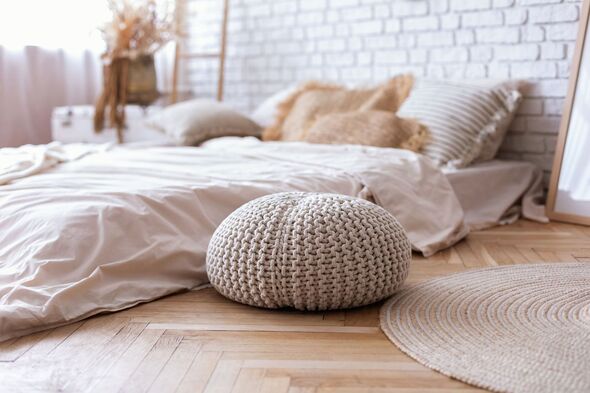Health
Interior Designer Shares Tips for Better Sleep Through Bed Placement

Strategic bed placement can significantly enhance sleep quality and overall wellbeing, according to interior design expert Zoe Warren from PriceYourJob.co.uk. With many individuals underestimating the impact of their bedroom layout, Warren offers practical advice on optimizing bed positioning for a restful environment.
Understanding the Command Position
A core principle of Feng Shui, the “command position,” suggests that the bed should be placed in a manner that allows the occupant to see the door clearly while avoiding direct alignment with it. This arrangement fosters a sense of control and security, which is vital for relaxation. Warren explains, “Placing your bed with a view of the door gives you a subconscious sense of control. But if it’s directly in line with the door, energy (or Qi) can flow too strongly, leading to disrupted rest.”
To further enhance the feeling of safety, Warren advises positioning the headboard against a solid wall. This not only provides psychological stability but also contributes to a calming atmosphere. It is essential to avoid placing the bed against multiple walls, as this can hinder the free flow of energy and restrict access.
Creating Balance and Harmony
Centring the bed on a long wall without windows or doors is a classic design choice that promotes symmetry and tranquility. Warren recommends using nightstands on either side of the bed to enhance functionality and create visual balance. She states, “Symmetry not only looks good but creates a rhythm in the room. It helps promote a feeling of harmony, which is essential for a restful environment.”
When considering room dimensions, Warren notes that a centred bed layout is ideal for square rooms, while rectangular spaces benefit from placing the bed along the longest wall. This approach prevents a cramped feeling, ensuring that pathways and doors remain unobstructed to facilitate both energy flow and usability.
For smaller bedrooms, utilizing the longest wall can maximize floor space. Larger rooms provide more flexibility, allowing for central placement or positioning against a feature wall. If structural limitations, such as oddly placed windows or built-in wardrobes, pose challenges, Warren reassures that creative furniture arrangement can still yield a balanced appearance. A large bedside table or a piece of artwork can visually compensate for off-centre placements.
Headboards serve more than just decorative purposes; they symbolize stability and security, according to Feng Shui principles. A well-chosen headboard can frame the bed beautifully and anchor the overall design. Warren encourages selecting a style that harmonizes with existing décor, whether opting for a soft, upholstered look or a bold statement piece.
In her discussion of common bed placement mistakes, Warren highlights several key factors that can negatively impact sleep quality.
– **Under a window**: This can lead to issues such as draughts, light disruption, and lack of privacy.
– **In line with the door**: Such placement can create a sense of vulnerability, which is not conducive to deep rest.
– **Blocking walkways**: This restricts natural movement and disrupts the flow within the room.
By thoughtfully considering bed placement and adhering to these guidelines, individuals can transform their bedrooms into sanctuaries that promote restful sleep and enhanced wellbeing.
-

 Health3 months ago
Health3 months agoNeurologist Warns Excessive Use of Supplements Can Harm Brain
-

 Health3 months ago
Health3 months agoFiona Phillips’ Husband Shares Heartfelt Update on Her Alzheimer’s Journey
-

 Science1 month ago
Science1 month agoBrian Cox Addresses Claims of Alien Probe in 3I/ATLAS Discovery
-

 Science1 month ago
Science1 month agoNASA Investigates Unusual Comet 3I/ATLAS; New Findings Emerge
-

 Science4 weeks ago
Science4 weeks agoScientists Examine 3I/ATLAS: Alien Artifact or Cosmic Oddity?
-

 Entertainment4 months ago
Entertainment4 months agoKerry Katona Discusses Future Baby Plans and Brian McFadden’s Wedding
-

 Science4 weeks ago
Science4 weeks agoNASA Investigates Speedy Object 3I/ATLAS, Sparking Speculation
-

 Entertainment4 months ago
Entertainment4 months agoEmmerdale Faces Tension as Dylan and April’s Lives Hang in the Balance
-

 World3 months ago
World3 months agoCole Palmer’s Cryptic Message to Kobbie Mainoo Following Loan Talks
-

 Science4 weeks ago
Science4 weeks agoNASA Scientists Explore Origins of 3I/ATLAS, a Fast-Moving Visitor
-

 Entertainment4 months ago
Entertainment4 months agoLove Island Star Toni Laite’s Mother Expresses Disappointment Over Coupling Decision
-

 Entertainment3 months ago
Entertainment3 months agoMajor Cast Changes at Coronation Street: Exits and Returns in 2025









